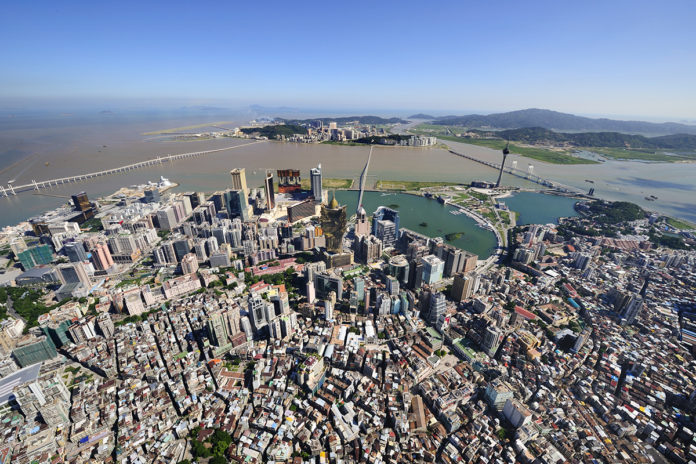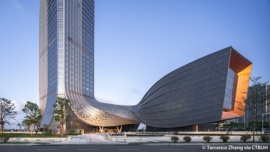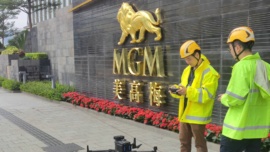Authorities have revealed that the shifts of up to seven metres in the island for the Hong Kong-Zhuhai-Macau Bridge should not delay the opening date of the project, despite most of the 22 steel cells used to fix the seawall having drifted three to five metres, with two shifting over six metres, the Highways Department of Hong Kong told media on Friday. Director of Highways Peter Lau Ka-keung said: “From last September to now we have not identified any major movements,” and that “for some six steel cells which had smaller movements we already fixed the problems with our contingency fund because we wanted to catch up with the deadline,” reported the South China Morning Post. For eleven steel cells that moved more than four metres Lau said that the contractor had already conducted work to strengthen the relevant seawalls with its own funds. Lau didn’t reveal the cost necessary to fix a further five steel cells, stating, “We will negotiate with the contractor to see who should bear the costs,” the publication noted. There are 85 total steel cells around the island boundary, with 22 major cases of shifts and others of less than two metres on average. The shifts are due to a new ‘non-dredged’ method so far unused in Hong Kong in order to ‘minimize the environmental impact of the Hong Kong Boundary Crossing Facilities (HKBCF) project’ including ‘construction traffic in sea can be reduced by half, and the suspended solids in the sea water can be reduced by approximately 70 per cent,’ according to a press release. Infrastructure pays Listed as responsible for ‘design and construction of artificial islands’ on the Highway Departments page is China Communications Construction Ltd. as leader of a joint venture for the project. Despite the group not being listed within the contracts for the HKBCF on the Highways Department’s website the group notes that for their segment – involving the ‘vehicle clearance square and auxiliary construction of Hong Kong Port’ for the bridge, in a filing on the Hong Kong Stock Exchange, attributed a contract value of US$982 million (HK$7.62 billion) – on a project with a total estimated cost of HK$35.9 billion. The group also listed their 40 per cent ownership interest in the estimated HK$25 billion project for the Hong Kong Link Road – on a segment running from the boundary to Scenic Hill – attributed to a joint venture between Dragages-China Harbour-VSL, according to the HKBCF contract website, for HK$12.87 billion. For the 2015 year the group saw 27 per cent of their new infrastructure construction contracts derive from roads and bridges work, followed by port work at 24 per cent and railway work at 21 per cent. The largest share of new infrastructure construction contracts came from Africa at 52 per cent of business and the Hong Kong/Macau/Taiwan region only accounted for 10 per cent of contracts. The group saw a total of RMB403.6 billion in revenue and a 10.3 per cent increase culminating in a profit of RMB15.83 billion – a 13.2 per cent increase.
—
























